#ancestral worship
Text



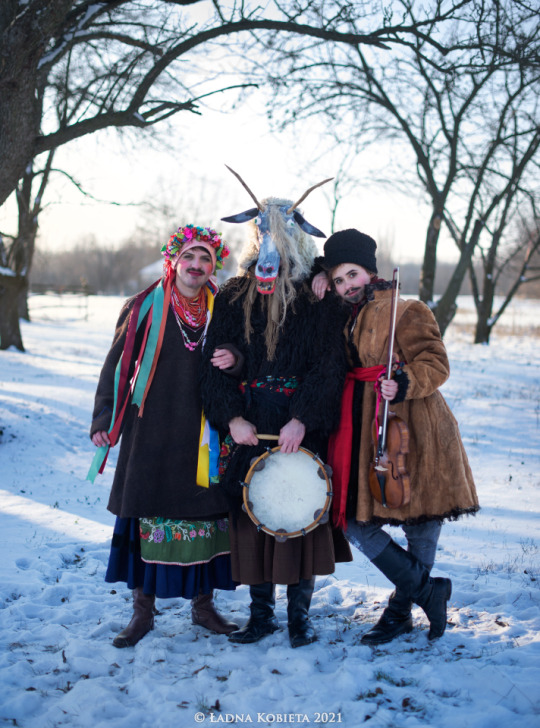

traditional cross-dressing on ukrainian malanka holiday. the woman is dressed as vasyl (folk adaptation of st. basil) and the man is dressed as malanka (folk adaptation of st. melania).
during this holiday, ukrainians honor the ancestral spirits and imitate them by dressing as animals and opposite genders, since it is believed that the otherworld blurs the line between male and female, as well as between man and beast.
photographed by anna senik (ładna kobieta)
#ukrainian folklore#ukrainian culture#folk christianity#ancestral veneration#ancestral worship#slavic folklore#ukraine#ethnography#malanka
4K notes
·
View notes
Text




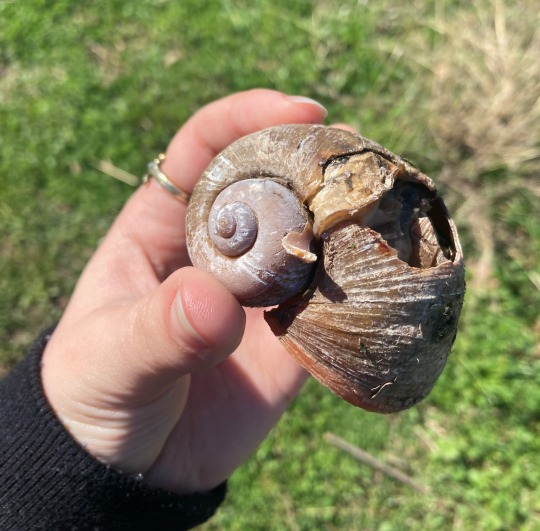
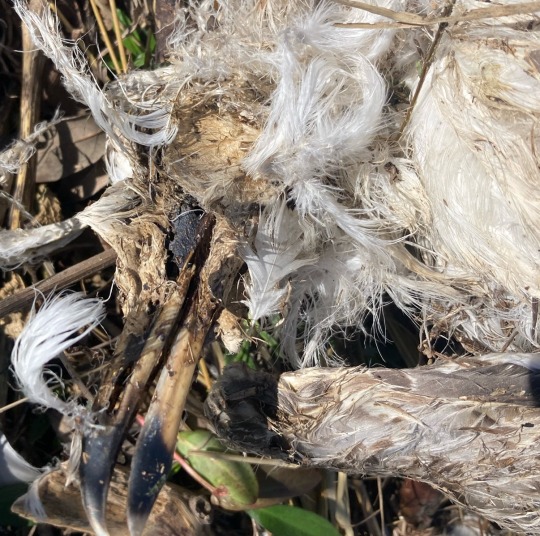
Worshiping nature
#ancestor work#ancestral worship#nature#poetry#spilled ink#rotting#naturecore#dirtcore#snail#lake#cottagecore#nature witch#nature walk
24 notes
·
View notes
Video
youtube
Uncovering the Power of Hoodoo: An Ancestral Journey, May 16, 2023
Tank Ball explores the origins of Hoodoo, a unique and powerful form of spiritual practice deeply rooted in African American culture and the ancient ritual of ancestral worship.
Religions like Vodou in Haiti, Candomblé in Brazil, and Santería in Cuba share similarities with Hoodoo, but are unique to the places where they were created. Through interviews with renowned scholars and spiritual practitioners, Tank Ball traces the lineage of Hoodoo back to the era of slavery, where African spiritual beliefs intertwined with Christianity and provides an intimate glimpse into the practices and philosophies that bind generations together.
PBS Voices
#continuity#culture#resistance#black history#colonialism#slavery#spirituality#religion#santeria#hoodoo#diaspora#ancestral worship#syncretism#trauma#Candomble#Ritual#PBS#community#history
135 notes
·
View notes
Text

Ancestral Worship is Vital to a pagan Faith.
One of the most universal religious and cultural phenomena in humanity is the veneration and worship of ancestors. Scholars and historians believed that it is the oldest tradition of worship since the beginning of humanity. That life goes on with our ancestors, each religion and culture is different. If you are a pagan and a witch or one or the other, you may come to contact with ancestors that won’t agree with your beliefs today such as Christian ancestors. But these are human spirits and your family that will love you and care for you no matter what has your own best interests at heart. Pray to them for guidance and set the intention of wanting a ancestor who also was a witch to guide and help in your magical journey. Have them help with a job or family matters or to heal generational trauma. There are certainly not great ancestors and it’s perfectly fine if you don’t want to venerate them. But you don’t have to work with them directly just light a candle for them and leave offerings. Ancestral veneration isn’t required but certainly essential to one’s practice and beliefs.
12 notes
·
View notes
Text
updated my ofrenda ♡

#me#dear diary#religion#mexican folk catholicism#mexican folk magic#mexicana#ofrenda#ancestral worship#ancestor worship#ancestors#ancestral magic#ancestral reverence#folk witch#folk witchcraft#folk catholicism#folk magic#folk
8 notes
·
View notes
Text
Sometimes when you feel like contacting a whole new god for this or that favor take a moment to consider if contacting your ancestors isn’t the simpler and more logical solution here.
177 notes
·
View notes
Text

Caristia, or Cara Cognatio, “Dear Relatives”, is a Roman festival celebrated on the 22nd of February to finalize the sacred week of ancestral worship of Parentalia. The celebration was marked by its highest degree of privacy as the Lares, Lari Domestici, and one’s deceased relatives were properly reunited with after the long week of veneration of the dead. Sacrificial activities, return to the temple devotion, and offerings that once again included burning of incense, prohibited during Parentalia, marked the period of exiting the mourning rites for the Romans and entrance of a calmer, private, family-focused celebration of Cara Cognatio.
The very idea behind Cara Cognatio lies in an Ancient pre-Roman concept of animism, which was a belief that everything, including inanimate objects, possesses a “soul” or a spirit inhabiting it, which the Ancient Romans would refer to as numen, plural - numina. This entity inhabiting everything within Ancient Roman perspective would be one to negotiate with and build a good relationship with, as the spirit possessed the ability to bless or curse those who, respectively, treated Them well or disrespected Them.
Numina appeared to Romans in a vast number of forms. Although, some of Them, such as Chthonic forces, did not possess human form. Some, such as ancestral spirits and household Gods, could interfere with the daily life of Their family or household. Not honoring the spirits on proper occasions when the time of interaction of the human world and the spirit world came around would be considered offensive and enraged spirits could avenge those who did not properly venerate Them.
The Roman worldview seemed to place Gods and spirits of the household alike into the caretaking, protective roles: They were interested in keeping the families of Rome safe and secure and, thus, the families were supposed to participate in proper rites to appease the Gods and the spirits alike. Households were believed to thrive when the ancestral spirits were venerated well whereas those deemed unlucky were believed to suffer due to lack of proper devotion put into venerating their ancestral companions.
Caristia is described in a number of Roman works of literature, such as Aulularia by Plautus or Fasti by Ovid. The latter pays special attention to the involvement of both legendary Aeneas and the Emperor Augustus into the celebration, thus creating a paternal connection between the Emperor and his people. Writings of the time mark that Caristia was a time to settle family feuds and arguments in favor of unification and quiet worship.
While many Roman festivals held no restriction to involvement of strangers, this one is an exception: strangers are not permitted to honor the Lares.
Cara Cognatio remained on the calendar long after the Roman Empire became Christian because Caristia was not incompatible with Christian habits such as the consumption of bread and wine at the tomb, which found its place in the Holy Eucharist. Up until the first half of the sixth century AD some Gallo-Romans still followed a part of the feast with food offerings to the dead and a ritual meal.
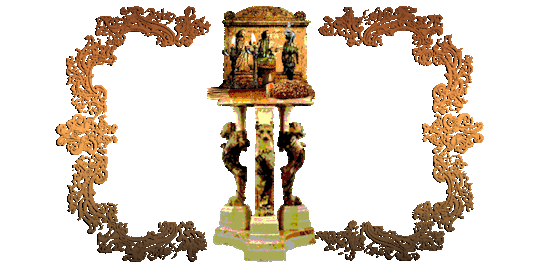
It should be said that Lares were not the only spiritual forces venerated by the Romans in reference to protection of the house, the family, and the state: other spirits as such included Panes & Penates, Parentes, Manes, Lemures, Genius, Genius Loci, Umbrae, and all the rest. We can witness how seriously Romans took protection of the houses and the cities they inhabited from the fact that they had numerous Deities of specifically Roman and Etruscan origin that dealt with protection of the house and the state, some of whom are:
🗝 Janus, God of beginnings, gates, and doorways.
🗝 Vesta, Goddess of the hearth and home.
🗝 Cardea, Goddess of hinges.
🗝 Forculus, God of the door itself, especially double doors.
🗝 Limentinus, God of the threshold.
🗝 Terminus, God of boundaries and borders.
Janus and Vesta received state-supported celebrations through Virgin Vestals and the general population of Rome, but home-based, personal worship and devotion were just as important.
The Lares, venerated during Cara Cognatio, were the guardian spirits of one’s household that were also considered the spirits of the dead ancestors from various eras of the past. Believed to come from a nymph named Lara or Larunda, sometimes referred to or conflated with Acca Larentia or, in some myths, Dea Tacita. They were meant to keep the families strong and households secure. Some stories refer to Lares as multiple children of Mercury, though this needs to be attested further. Like other spirits of the Roman era, Lares were split into a large number of specific group of spirits, each of whom took care of a particular part of Roman routine, and here are some examples:
🗝 Lares Augusti, the spirits looking after the Emperor and his family.
🗝 Lares Hostilii, the spirits protecting the city from its enemies.
🗝 Lares Militares, guardian spirits in the army and during the journey.
🗝 Lares Patrii, possibly the equivalent of dii patrii (deified ancestors) who were worshiped during Parentalia.
🗝 Lares Permarini, spirits of protection against danger at sea.
🗝 Lares Praestites, spirits who look after Rome, then the state and the community.
🗝 Lares Publici, protecting the whole city.
🗝 Lares Privati, protecting private homes.
🗝 Lares Rurales, taking care of the fields.
🗝 Lares Urbani, taking care of the state.
🗝 Lares Viales, spirits guarding the roads and their crossroads.
Other household spirits, Manes, Penates, Parentes, and the rest received due veneration on other occasions as Roman Polytheism is a highly well-structured religious formation that had established Their own sacred festival or rites for every group of spirits venerated.

As it has already been stated, the Gods connected to protection of the city and the families received rich state-supported celebrations on Their days of veneration. Janus and Vesta had Their own worshippers and state-supported religious circles that took care of Their temples, altars, and rites being treated well. State festivals and the honors due to the Gods were readily handled by the pontifices (priests), the pontifex maximus (high priest), the rex sacrorum (king of sacred things), the augures (diviners), and the minor priests of the individual Deities known as the flamines. One of the most popular flamines, for example, would be Flamen Quirinalis, dedicated to maintaining rites of the God Quirinus venerated in Rome.
These authorities had the job of honoring the Gods well in state perspective while it was up to each individual household (specifically the head of that household, usually the father of the family) to honor their own spirits. Roman Polytheism was based on the ideas of quid pro quo, or favor for a favor, and concepts of pax deorum and ire deorum. This implies that Roman citizens believed that as long as one paid proper respect to one’s household spirits and Gods alike, one would enjoy good health and prosperity as manifestations of spiritual and Divine blessings.
Lares as one’s deceased ancestors were known as Lares Familiares (spirits of the family) or Lares Domestici (spirits of the home) but also were acknowledged in protecting the community, Lares Compitales, and got honored at the Compitalia in December. Daily prayers and offerings were made to the Lares throughout the year but elaborate rituals were enacted on special days such as a birthday, wedding, anniversary, departure or return from a journey. When a family moved permanently from one house to another, the Lares, Panes, and Penates would move with them.
The families would throw banquets to honor their Lares where, dressed in white, they would consume food together with their deceased ancestors, exchanging gifts afterwards and sometimes giving small pouches of money to the servants who were also sometimes seen as a part of the family. Feasts were held at home and at graveyards alike, thus symbolizing the eternal bond between the living and the deceased. Lara statues were placed on the table, which proves that Their presence was believed to be beneficial to the privacy of the home. In the evening, before going to sleep, the master of the household, usually the father, poured wine on the lararia of the house as a libation, then drinking to the health of the ancestors. Offerings at the household shrines included: doll-like figurines, cakes, wine, incense, and flowers.

I would like to offer some of my own ideas as to how to honor one’s household spirits in respect to Roman tradition. I suggest some offerings to give:
🗝 Food: cakes, different kinds of wine, honey, milk, pomegranates, and pastries or other kinds of sweets containing honey, milk, nuts, or substitutes if you are allergic.
🗝 Crafts: knitted and sewn objects, handmade gifts, homemade incense blends, protective dolls and other figurines made out of clay, wood, or other material of choice.
🗝 Incense: frankincense, rose, terebinth, cinnamon, rosemary, myrrh, cedarwood, gold and black copal, vanilla, marjoram.
🗝 Flowers: roses, myrtle, poppies, artemisia, orchids, lillies, forget-me-nots, lilacs, chrysanthemum, gladioli, hyacinths, violets, oleanders, aconitum.
🗝 Miscellaneous objects: personal or shared possessions, objects the deceased loved in life, and other customized offerings.
And I also suggest that you make specific and personalized offerings as well as devote your time to your specific ancestral spirits in ways that are unique to you and Them, seeing that every family is an individual formation with their own customs and history.
Sources in my pinned.
#𓆩𝕍𓆪 ˣ 𝐅𝖊𝖗𝖎𝖆#tagamemnon#roman gods#roman polytheism#religio romana#roman festival#ancient rome#polytheism#caristia#ancestral worship
53 notes
·
View notes
Text
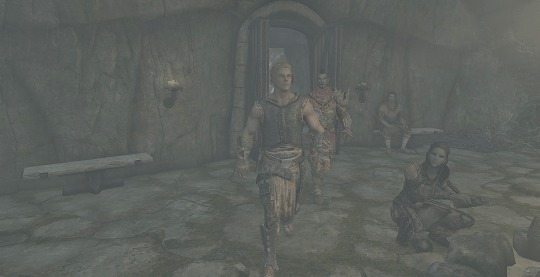
it was awkward for him after he noticed teldryn and jenassa. "...filthy dark elf necromancy.. oh– but i'm sure you're not like that, of course, heheh..."
#marc just chillin there#x#golldir#teldryn#jenassa#teldryn sero#nords#nord#dunmer#marcurio#skyrim#skyrim screencaps#skyrim screenshots#tesv#ancestral worship#hillgrund's tomb
5 notes
·
View notes
Text
When a person dies in Achaivaiam, he or she only appears to die. The dead are still very much alive. All life always has existed and always will exist, but it takes ritual work to ensure that it continues within the Chukchi circle of rebirths and is not overtaken by tannit.
All beings: animals,the deceased, inanimate objects, and “even the shadow on the walls” (Bogoras 1904–1909: 281) are said not only to possess intentionality but also to live in societies, and consider themselves to be human beings.
As with many other Arctic and sub-Arctic peoples, the Chukchi cosmos is organized around the principle of rebirth (Bogoras 1904–1909; Bronz and Willerslev 2012; Mills and Slobodin 1994; Obeyesekere 2002; Willerslev 2000); a dead person’s soul will cycle back to be reborn in a neonate, who can therefore be identified as an ancestor returned.

On a September night Vova, a 45-year-old father and husband, died of tuberculosis in his home. We are told, however, that only his body has died; Vova can still hear, communicate, and feel hunger, thirst, and emotions since the invisible side of his being is considered as remaining alive. We call this the soul, but had it not been contained by his name it would merely be the anonymous essence or existence: va’irgin.
To please Vova and secure his comfort, a room in his house is emptied and he is placed on reindeer skin in the center with his head resting on a pillow. There is a clear resemblance here with a typical reindeer sacrifice where the deer is also placed comfortably on a bed of willow branches. A crucifix and a stone are placed on Vova’s chest, the first to chase away the ke’let, who are said to gather around the dead body to eat its soul, the second to ensure that he does not stand up and walk around, and begin to consume the people around him. He is surrounded by a minimum of four women, preferably more, who are placed strategically along each side of his body to serve as “protective armor.” (see Figure 1) None of the protectors leave Vova’s side without ensuring that another woman takes her place. Spirit food, enel’vit, in the form of fur from a white rabbit mixed with reindeer fat, is placed in the window of the room to feed any spirits in the hope that they will then allow Vova a safe passage.
Vova stays in his house for three days while all the preparations for his further journey are taking place. During those days the house is full of guests, who come and go as they please. They bring tea, sugar, candy, tobacco, and other luxuries to his wife, which she then serves to the guests. The guests place packets of cigarettes on Vova’s stomach on top of the blanket. When they later wish to smoke, they help themselves from this pile of cigarettes as if Vova himself who—as a good host— were offering them. The visitors all chain smoke to prevent the smell of Vova’s decomposing body from filling the room.

On the third morning, family and friends share their last meal with Vova. Then he is dressed in his death suit. It is only the women who are allowed to participate in dressing Vova, so the men retreat to the outdoors. The dressing is a dangerous affair due to Vova’s semi-sacred status, and the women dressing him face potential retaliation. The women therefore disguise themselves by imitating ravens: they put on feathers made of hay and they croak like ravens (see Figure 2), as they will also do later on the pyre. The raven is the creator and trickster in Chukchi mythology. His name is Ku’urkil, or the “self-created one” (Bogoras 1904–1909: 315). He is like a great shaman that possesses enormous powers to make things in the world. Yet he is also a fool who does this by default, someone people can trick to take on their blame. By becoming ravens the women signify the power to transform Vova’s body from one being to another, but as a consequence of the inherent moral ambiguity in sacriice or any killing, they also ensure that they will not be held responsible for any anger caused. Further precautions are taken by sewing Vova’s hood together so that he is blindfolded and does not recognize the intruders.
As already described, the prototypical notion of the ancestral world is that of “experience reversed.” For this reason, Vova is dressed opposite to what is normal: the left boot is put on the right foot and vice versa, the same goes for the mittens. Furthermore, his spear and walking stick are made in miniature because small turns big on the other side. When Vova is fully dressed in his new body, everyone present says good-bye to him by walking around him in the direction of the movement of the sun. As they walk over his legs, everyone kicks his knees three times with the back of their feet while roaring like bears (Chukchi: kainu). According to Bogoras, brown bears are considered akin to man among the Chukchi. They are, so to speak, human beings clad in bearskin and are believed to be shamans (Bogoras 1904–1909: 325). This understanding is widespread throughout inner Asia, and Joseph Campbell noted, that it has been found in the entire North from Finland and Northern Russia through to Hudson Bay and down the West coast to the tribes of Tlingit and Kwakiutl (Campbell 1959: 339).

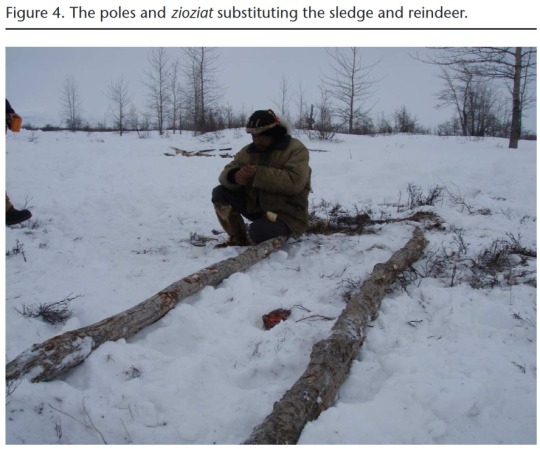
The two women imitating ravens step up onto the pyre, and while imitating the sounds of the bird they cut open Vova’s stomach as if slaughtering him like a sacrificial reindeer. By cutting Vova’s stomach open, the necessary destruction of his physical body is set in motion, which will enable his soul to be
re-leshed on the other side.
Since the ritual killing of Vova is both a morally problematic and risky affair, it is something that needs to be carried out in a hurry. Therefore, as soon as their deeds are done and the smoke from the ire is thick enough to conceal their true identity, the raven bodies are cast into the flames and the women jump down from the pyre and join the other participants. In haste they purify themselves with the ashes of another small ire in case any ke’let have attached themselves to them.
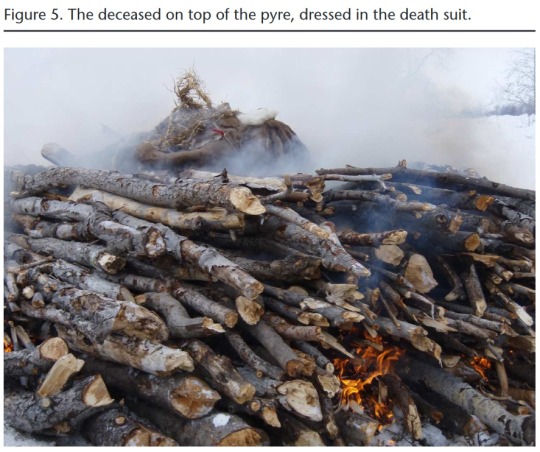
As the ire consumes Vova’s body, the participants become increasingly joyful. They begin playing the roles of ke’let (see Figure 6), involving what is called the “game of coal” (Chukchi: inaykeletok). Men and women chase and capture one another other to color each other’s faces black with coal. This is yet another shape shifting, which enables the transformation of Vova’s life-form to take place. The ke’let, as the consumers of human souls, are temporary enacted as happy helpers in the destruction of Vova’s present bodily form and thus his life’s continuation on the other side. While the ke’let jump around and Vova’s body continues to burn, a few elderly women sit with their backs towards the pyre and sing songs of his successful journey.

During the cremation, the two realms, that of the living and that of the ancestors, have effectively merged. While this is necessary to allow for a successful transference of the deceased from one to the other, it is now of utmost importance to ensure that these realms are re-separated into their proper place. If not, the deceased will, in the words of an elderly Chukchi woman, “start walking the streets of the village, taking their living kin with them to the ancestral realm.” Therefore, when the pyre has burned down it is time for the living to leave the place. Each participant takes a twig home with him or her to burn. In this situation the twig is a visible manifestation of the soul of the living, and thus a secure way for them to contain it and take it home. As they leave the same way they came, two women sitting on each side of the road cleanse the participants by touching them with alder twigs as they pass by. Then the two women close the road by planting small twigs into the ground and placing stones in front of them. In the reversed world of the dead, these will be experienced as impenetrable forests and mountains that will prevent the deceased from following his living kin and friends.

Entering the sacred space of Shamanka (”Shamaness”) to perform the “second burial” must be done with care. One must step gently and throw a stone where the pyre was in order to scare away any ke’let. The remains of the deceased (the ashes and pieces of bones together with the three stones placed between the poles, which made the foundation of the pyre) are gathered by sweeping them together with alder branches, then they are encircled with a lasso-ring. The lasso is said to “catch the place” of the ancestors. A twig as well as tea, tobacco and other small offerings are placed inside the lasso-ring, and the participants then have tea around the encirclement. The twig represents the souls of the living, who have the last cup of tea with Vova. When tea is finished the twigs are taken home and burned to ensure that none of the participants’ souls remain in the ancestral realm.
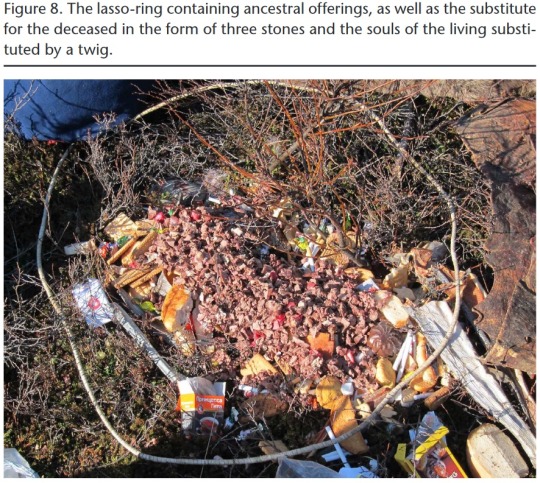
This is the end of the second burial. At this point the previous body containing the life force of the deceased has been destroyed, the meat has been separated from the soul, the relationship with Vova has been closed with a last goodbye tea party, and he is now free, and should be able to endure his long journey to the ancestral realm.
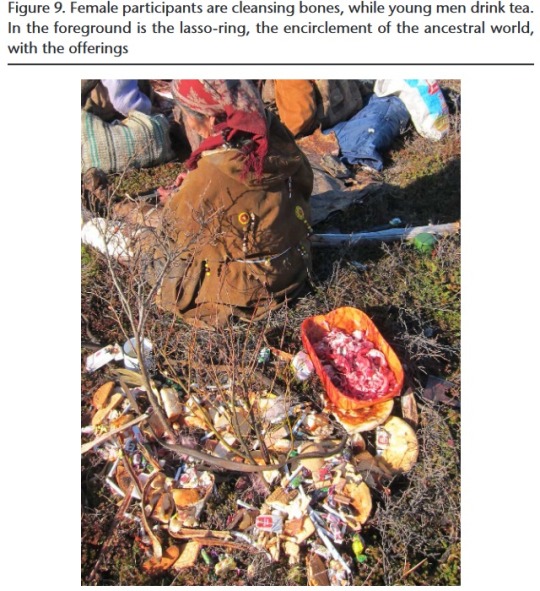
The men create a mini-herd of reindeer by placing the vital bone parts—the antlers with the skull, the femurs, jawbones and the irst cervical bone—in a row on the ground. The reindeer skulls and bones are cautiously placed in the correct order by the herders, according to their real life placement and personality within the herd; so that the leader of the herd leads the convoy, and the followers follow. Their heads are directed towards the north, which, as previously mentioned, marks the entrance to the ancestral world.
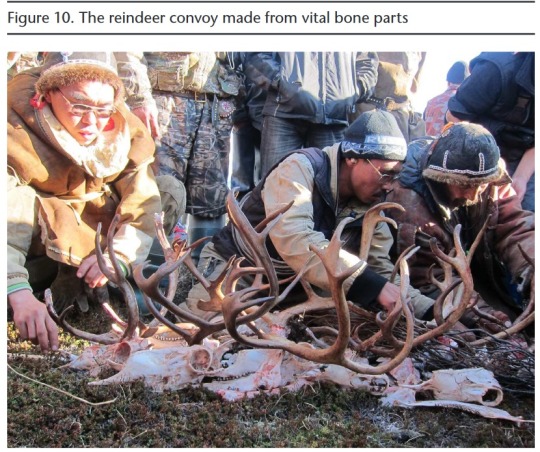
Only now that a private identifiable reindeer is sacrificed can Vova journey to the ancestral world together with the reindeer belonging to his kin, and only now can his name-soul and those of the others that died during the past year resettle into a life among the ancestors.
“Regenerating life in the face of predation. A study of mortuary ritual as sacrifice among the Siberian Chukchi”
JEANETTE LYKKEGÅRD AND RANE WILLERSLEV
#anthropology#animism#shamanism#ritual#reindeer#chukchi#kamchatka#death#funerary rites#ancestors#ancestral worship#siberia#deer#my upl#sacrifice
30 notes
·
View notes
Text
One of the worst things about trying to find out about ancestors when they immigrate all over the place is that it’s really hard to find anything about them, like records and such because they were displaced due to wars and other stuff.
The other annoying thing is when online records have a very inconvenient 20 year gap that happens to include all of the years said ancestor likely would’ve immigrated.
My mom doesn’t know anything about her family. I’m trying to learn more about my Jewish great grandfather because he seems to call out to me the most, but my mom doesn’t even know his name. I don’t know what to do. How can I start ancestor work if I can’t even find the ancestor’s name? And this should be one of the easier ancestors to find information for.
#ancestral work#ancestor work#ancestor worship#ancestral worship#ancestors#ancestral witches#ancestral witch#pagan#pagan witch#paganblr#paganism
5 notes
·
View notes
Text
rusalki are not mermaids. stop translating the word "rusalka" as "mermaid" and stop calling rusalki "slavic mermaids". it's confusing, it's misleading, and it's simply isn't true. the association of rusalka with a western mermaid and undine began in 19th century, when russian empire poets wanted to adapt a popular western motif of a sorrowful water maid that is unrequitedly in love with a mortal man. this literature character of rusalka has nothing to do with actual rusalki folklore and cult.
rusalki are natural undead spirits that are connected to slavic ancestral worship. they don't have tails. they are not in any way connected to the sea: only lakes, ponds, and rivers. often, they're not even connected to water at all: there are forest rusalki, field rusalki, meadow rusalki, etc. they are in close relationships with their human kin: during the spring and summer, they are used in agricultural rites and are believed to help with farming and raising crops. rusalki were sacred to slavic people. the "week of the rusalki" festival, when rusalki are believed to walk on earth and visit their relatives, is celebrated to this day. to call them "slavic mermaids" is very diminutive of their actual role in slavic cultures.
#slavic mythology#slavic paganism#slavic folklore#ancestral worship#ancestral veneration#ukrainian folklore#ukrainian culture#rusalky#rusalka
2K notes
·
View notes
Text
Veneration to the Children of the Dragon
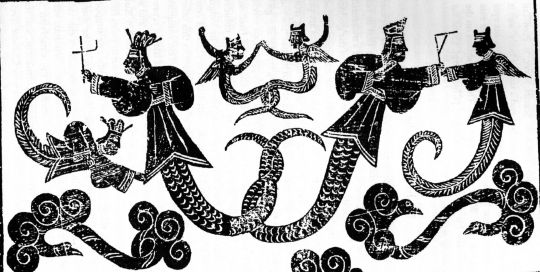
Fuxi and Nüwa couple from Wu 武 family funerary shrine (Wu Liang Ci 武梁祠), in present-day Jiaxiang 嘉祥, Eastern Han (151 AD). The archetypal symbolism of winged serpents, characteristic of Asian mythology, is still present in the oldest examples like this one.
The combination of bird and snake features refers to the Earth and Heavens realms’ cohesion. This is also the conjunction of Fire and Water, since birds are of a fiery nature, and serpentine beings – of water one. In later depictions, the primary symbolism was modified.
#chinese mythology#fuxi#nüwa#dragon#ancient china#eastern han#chinese culture#winged serpent#ancestral worship#chinese art#伏羲#女媧
37 notes
·
View notes
Text
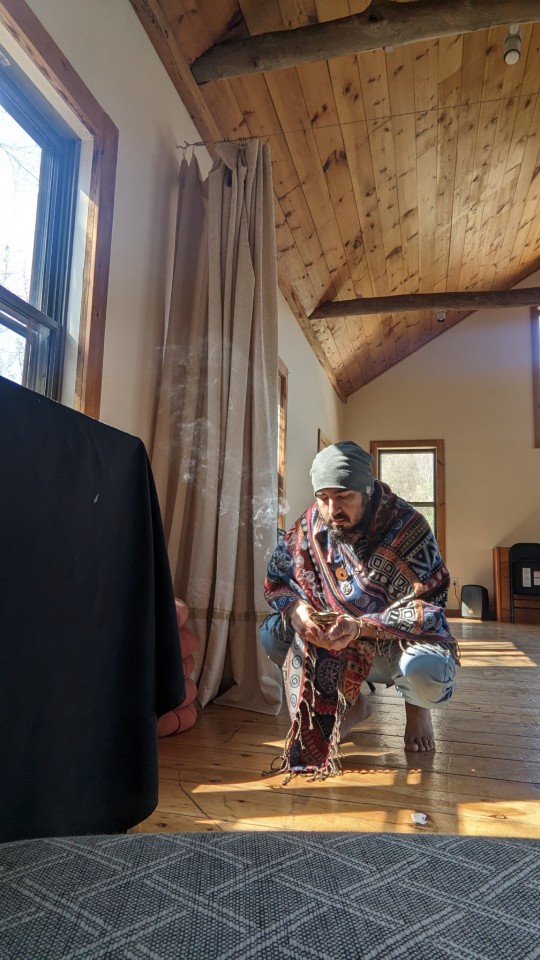
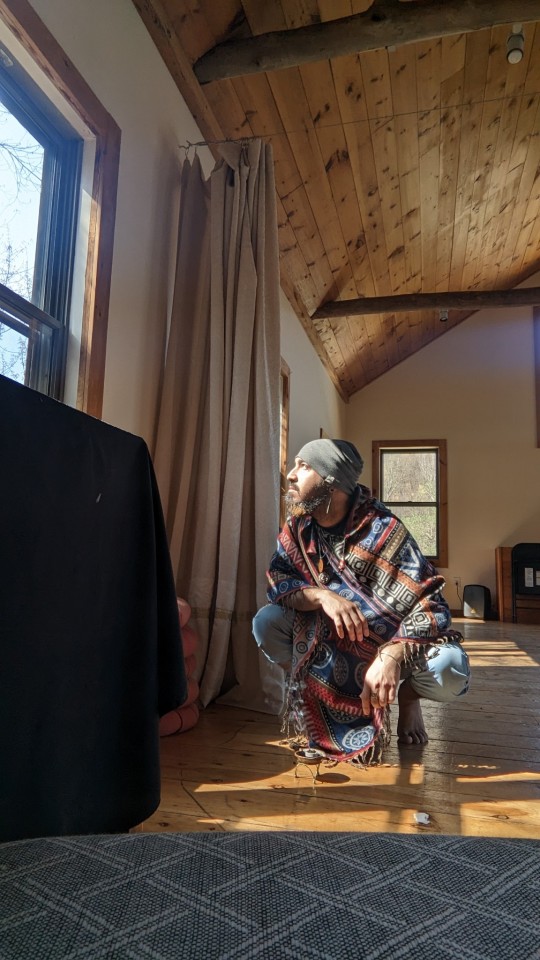

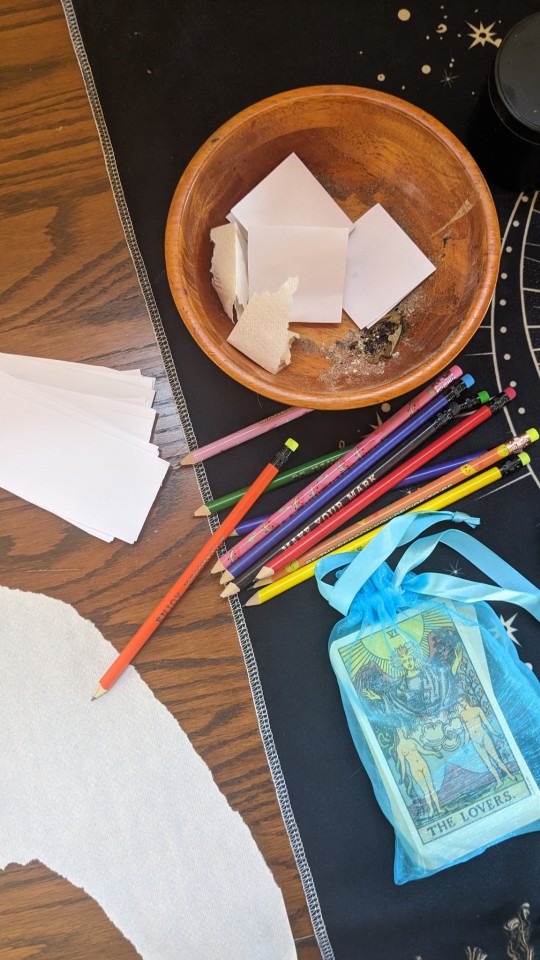

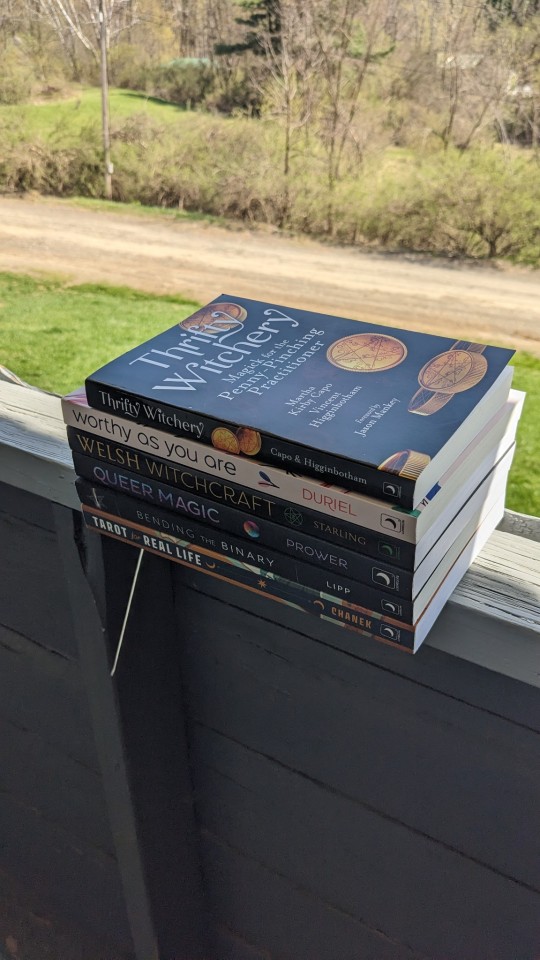

Inhale pain, exhale healing. Do not forget that you are made of dreams, dances, and beautiful songs of your ancestors singing time ago under the stars, through your blood runs the magic of thousands of stories of warriors, sorcerers, healers, farmers, heroes, artists, troubadours, and alchemists.
When you heal; you reclaim your power back.
When you stand up firmly in your power, you heal your ancestors and give them the chance to reclaim their power too.
Hugs warm like warm alpacas.
Xxo, ELO.
#wicca#witchcraft#magick#magic#witches#pagan#wiccan#easton Mountain#Easton Mountain Retreat Center#gay witchcraft#gay witches#gay witch#LGBT#LGBTQIA#LGBTQ#ancestry#ancestral veneration#ancestral worship
10 notes
·
View notes
Text
DIVINATION PRICE LIST!! 🔮🔮
All readings are done through the help of spirits that I work with, and your own spirit court (Spirit guides/Ancestors/Familiar Spirits).The messages you receive are from them.
SHORT READINGS: A short reading done with 3 cards, only one question (not including clarification, if I have to pull extra cards for this there is no extra charge)
Tarot - $15
Arcane Bullshit Oracle Deck - $15
FULL READINGS: 5 cards, so I go into much more detail. You may ask a follow up question if you have any, but it must be related to the initial reading
Tarot - $35
Arcane Bullshit - $35
Playing Cards - $30
#witchblr#divination#witchcraft#tarot#daily divination#fortune telling#daily tarot#fortune teller#spirit work#tarot cards#Ancestors#familiars#familiar spirits#ancestors#ancestral worship#traditional witchcraft#trad witch#folk witch#folk magic#paid divination#paid readings#paid tarot readings#tarot reader#cartomancy#oracle cards
28 notes
·
View notes
Text
Denar prednikov
Zavedamo se, kako pomembno je počastiti naše prednike in ohraniti spomin nanje. Eden od načinov za to je tradicionalna praksa denarja za prednike. V tem članku bomo raziskali zgodovino in pomen denarja prednikov, kako se uporablja danes, ter podali napotke, kje najti in kupiti te pomembne darove.
Kaj je denar prednikov?
Denar prednikov, znan tudi kot papir Joss, denar duhov ali duhovni denar, je tradicionalna kitajska praksa, ki sega v čas dinastije Han. Verjame se, da je posmrtno življenje nadaljevanje živega sveta, zato predniki v posmrtnem življenju potrebujejo zaloge, tako kot so jih potrebovali v svojem zemeljskem življenju. Denar za prednike se uporablja kot simbolična daritev, s katero se poskrbi za duhovne potrebe umrlih.
Papir se običajno sežge kot daritev med posebnimi dogodki, kot je festival Qingming, znan tudi kot dan pometanja grobov, ki je vsako leto 4. ali 5. aprila. Festival je priložnost, da družine obiščejo grobove svojih prednikov in jim ponudijo darila, vključno z denarjem za prednike, hrano in drugimi predmeti.
Kako se denar prednikov uporablja danes?
Čeprav ima denar prednikov korenine v kitajski kulturi, ga uporabljajo tudi pripadniki drugih kultur, vključno s tistimi, ki imajo kitajske prednike. Danes se denar prednikov uporablja kot način za povezovanje s pokojnimi bližnjimi in njihovo počastitev. Darila se pogosto sežigajo ob pomembnih mejnikih, kot so poroke in pogrebi, ali v težkih trenutkih, ko je potrebno duhovno vodstvo ali pomoč.
Nekateri ljudje denar prednikov uporabljajo tudi kot način, da svoje prednike prosijo za pomoč v posmrtnem življenju. Darila se lahko sežgejo z napisanimi posebnimi prošnjami ali željami, na primer za dobro zdravje, blaginjo ali vodstvo v določeni situaciji.
Kje najti in kupiti denar prednikov
Denar prednikov je na voljo na spletu in v specializiranih trgovinah. Pri nakupu denarja za prednike se je treba prepričati, da je papir izdelan iz visokokakovostnih materialov in da je kulturno ustrezen. V podjetju [ime vašega podjetja] ponujamo širok izbor denarja za prednike in druge tradicionalne ponudbe, ki so vsi izdelani skrbno in s spoštovanjem kulturnega pomena teh praks.
Zaključek
Zavedamo se, kako pomembno je spoštovati naše prednike in ohranjati spomin nanje. Denar za prednike je tradicionalna praksa, ki se je prenašala iz generacije v generacijo in ostaja pomemben način povezovanja z našimi bližnjimi in njihovega čaščenja v posmrtnem življenju. Ne glede na to, ali želite kupiti denar za prednike za poseben dogodek ali kot način, kako počastiti svoje prednike v vsakdanjem življenju, smo vam na voljo za svetovanje in podporo na vsakem koraku.
2 notes
·
View notes
Text
Paganism and Nature: Embracing the Connection for Spiritual Enlightenment
Table of Contents
Table of ContentsThe Connection Between Nature and Spirituality: Exploring PaganismThe World of PaganismWhy Talk About Paganism and Nature?Rediscovering Our Connection With NatureWhat is Paganism?A Broad Spectrum of BeliefsCommunity and Solitary PracticeThe Sacred Circle of LifeThe Connection Between Paganism and NatureThe Sacred Circle of LifeAnimism and Spirits of…
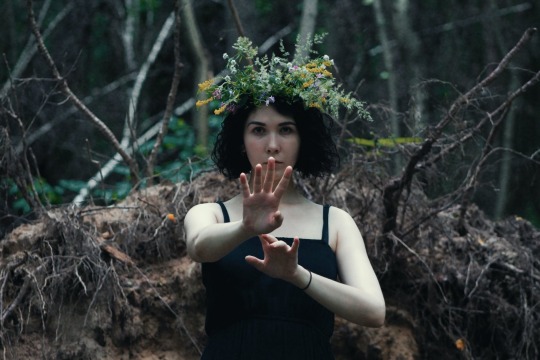
View On WordPress
#altar#Ancestral worship#Animism#crystal healing#divination#Druidry#Earth-based spirituality#Esbat#Goddess worship#Herbalism#Magic#Meditation#Moon cycles#Mythology#Nature religion#Pagan community#Pagan ethics#Pagan festivals#Pagan goddesses#Pagan gods#paganism#Paganism for beginners#Pantheism#Polytheism#Reincarnation#Rituals#Runes#Sabbats#Sacred spaces#Sacred symbols
0 notes